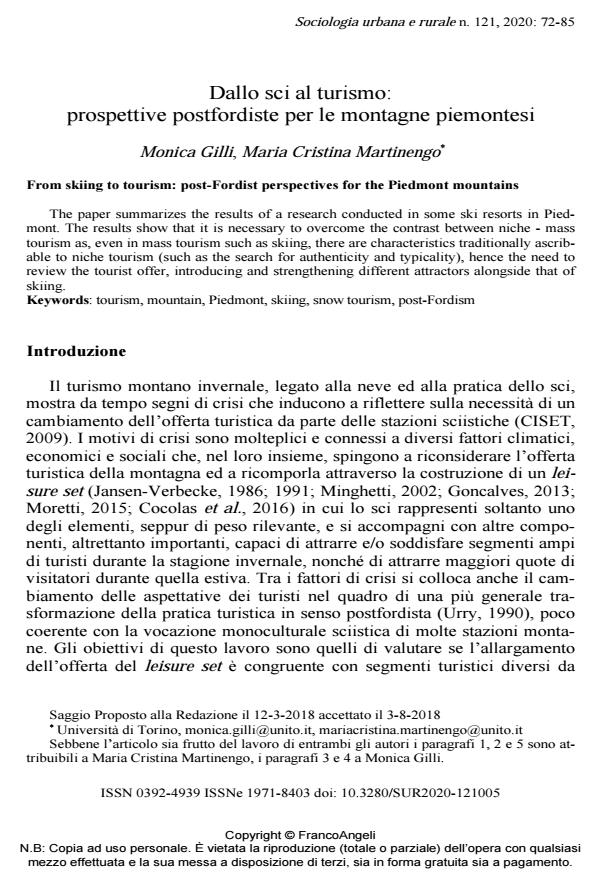From skiing to tourism: post-Fordist perspectives for the Piedmont mountains
Journal title SOCIOLOGIA URBANA E RURALE
Author/s Monica Gilli, Maria Cristina Martinengo
Publishing Year 2020 Issue 2020/121
Language Italian Pages 14 P. 72-85 File size 164 KB
DOI 10.3280/SUR2020-121005
DOI is like a bar code for intellectual property: to have more infomation
click here
Below, you can see the article first page
If you want to buy this article in PDF format, you can do it, following the instructions to buy download credits

FrancoAngeli is member of Publishers International Linking Association, Inc (PILA), a not-for-profit association which run the CrossRef service enabling links to and from online scholarly content.
The paper summarizes the results of a research conducted in some ski resorts in Piedmont. The results show that it is necessary to overcome the contrast between niche - mass tourism as, even in mass tourism such as skiing, there are characteristics traditionally ascribable to niche tourism (such as the search for authenticity and typicality), hence the need to review the tourist offer, introducing and strengthening different attractors alongside that of skiing.
Keywords: Tourism, mountain, Piedmont, skiing, snow tourism, post-Fordism
Monica Gilli, Maria Cristina Martinengo, Dallo sci al turismo: prospettive postfordiste per le montagne piemontesi in "SOCIOLOGIA URBANA E RURALE" 121/2020, pp 72-85, DOI: 10.3280/SUR2020-121005